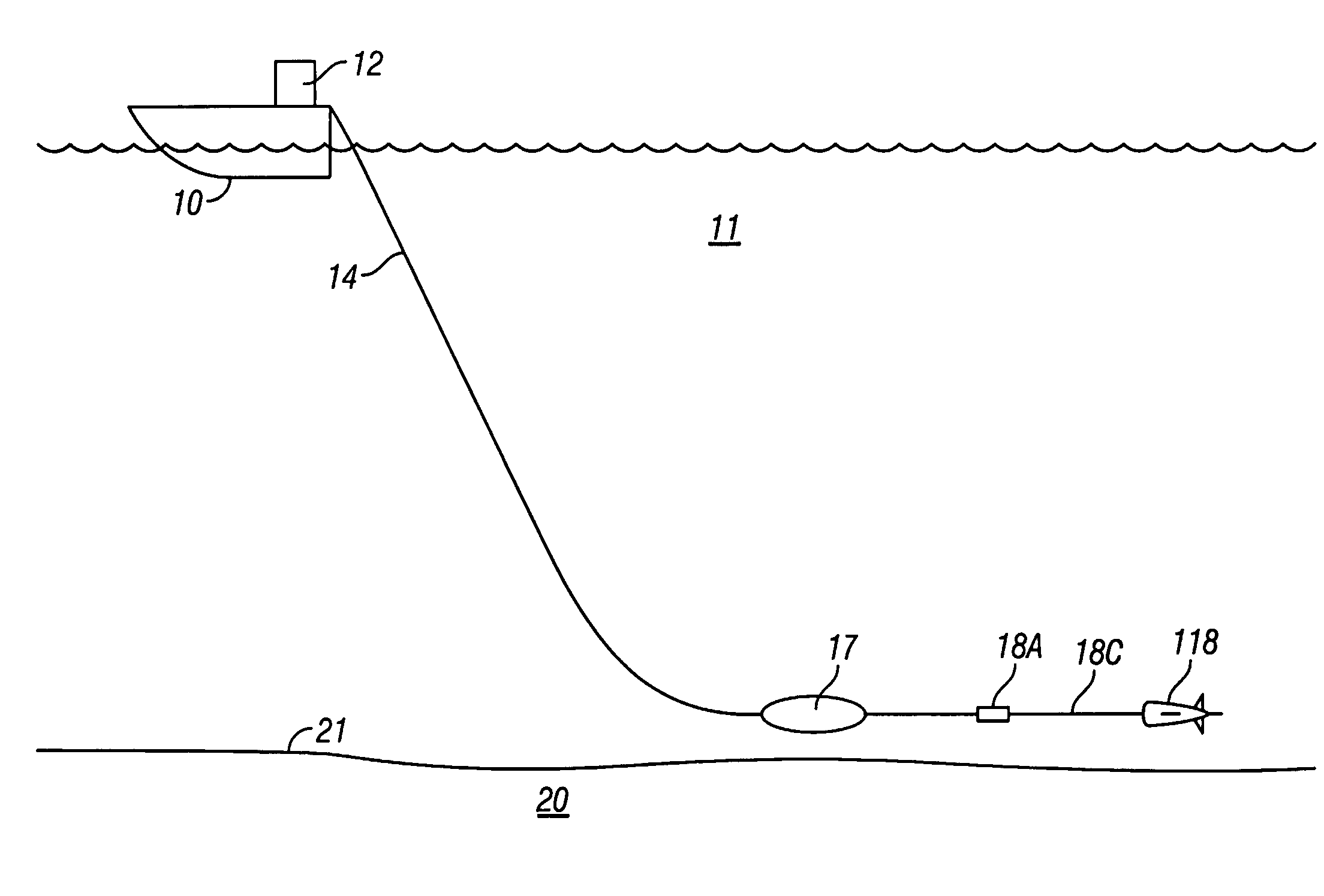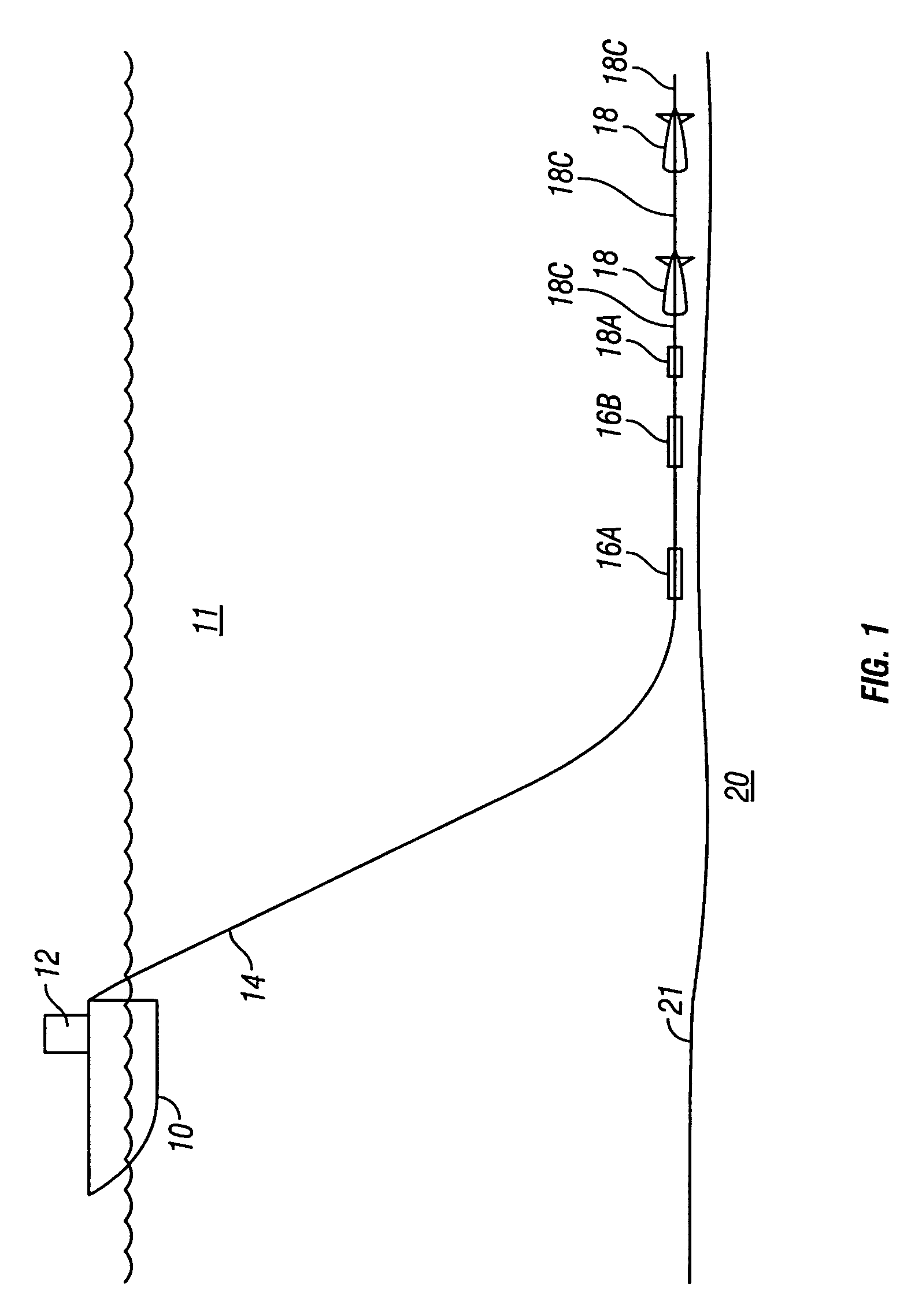Low noise, towed electromagnetic system for subsurface exploration
a technology of electromagnetic system and subsurface exploration, which is applied in the direction of geological measurements, instruments, reradiation, etc., can solve the problems of difficult to measure the voltage induced by electromagnetic effects, foregoing electromagnetic survey techniques can be time-consuming and expensive to perform, and using towed electrodes known in the art for electromagnetically induced voltage detection, etc., to minimize turbulence and minimize the motion of the housing
- Summary
- Abstract
- Description
- Claims
- Application Information
AI Technical Summary
Benefits of technology
Problems solved by technology
Method used
Image
Examples
Embodiment Construction
[0028]In the description of the invention herein, the term “detector” will be used to mean a device towed by a survey vessel or other vessel on a cable, which device includes one or more sensing elements for detecting one or more aspects of the interaction of electromagnetic fields with the formations in the Earth's subsurface. The electromagnetic fields may be induced in the Earth's subsurface by generating a time varying electric field or a time varying magnetic field in a body of water at a selected depth below the water surface. Generally, the one or more sensing elements can be galvanic electrodes disposed on, or magnetic field sensors disposed within a housing. The housing is configured to minimize water turbulence as it is towed through the body of water, and is configured to minimize motion of the housing in any direction other than along the direction of towing of the housing.
[0029]One embodiment of a marine controlled source electromagnetic survey system according to the i...
PUM
 Login to View More
Login to View More Abstract
Description
Claims
Application Information
 Login to View More
Login to View More - R&D
- Intellectual Property
- Life Sciences
- Materials
- Tech Scout
- Unparalleled Data Quality
- Higher Quality Content
- 60% Fewer Hallucinations
Browse by: Latest US Patents, China's latest patents, Technical Efficacy Thesaurus, Application Domain, Technology Topic, Popular Technical Reports.
© 2025 PatSnap. All rights reserved.Legal|Privacy policy|Modern Slavery Act Transparency Statement|Sitemap|About US| Contact US: help@patsnap.com



